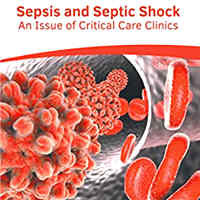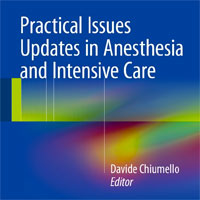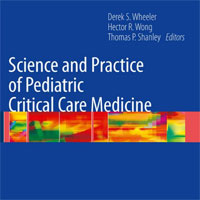Tag: sepsis
Septic Shock Developing Later During Hospital Stay Associated with Higher Mortality
In-hospital mortality continued to rise as admission-shock-onset-time increased in patients with septic shock. No clear dichotomization between early and late septic shock could be ascertained, and this categorization may... read more
Sepsis-Associated AKI Risks in the PICU
In children with severe sepsis, the degree of hemodynamic support as measured by the VIS and the presence of fluid overload may identify patients at increased risk of developing severe acute kidney injury (AKI). Children... read more
Postoperative Sepsis Infection Can Be Identified Using Gene Expression Signatures
Host biomarker signatures may be able to identify postoperative infection or sepsis up to three days in advance of clinical recognition. If validated in future studies, these signatures offer potential diagnostic utility... read more
CRT-targeted Fluid Resuscitation vs. Lactate-targeted in Septic Shock
Capillary refill time (CRT)-targeted fluid resuscitation in septic shock was not superior to a lactate-targeted one on early fluid administration or fluid balances. However, it was associated with comparable effects on regional... read more
Public Sepsis Awareness Campaigns Should Be Created Based on Local Data
Although public knowledge of sepsis and its mortality is generally low, some countries have high awareness and knowledge, and as such, any public awareness campaigns should be created based on local data. This will also... read more
Temporal Trends and Hospital Variation in Time-to-Antibiotics Among Veterans Hospitalized with Sepsis
This cohort study across nationwide VA hospitals found that time-to-antibiotics for sepsis has declined over time. However, there remains significant variability in time-to-antibiotics not explained by patient characteristics,... read more
Sepsis and Septic Shock: An Issue of Critical Care Clinics
Shock is caused by the decreased flow of blood to the body tissues due to circulatory system related problems. Sepsis refers to a life-threatening condition where the body causes injury to its own organs and tissues in response... read more

Sepsis Protocols to Reduce Mortality in Resource-restricted Settings
Simplified sepsis protocols are essential to improving sepsis-related mortality rates in resource-restricted settings, but adequate training of clinicians and modified protocols are necessary for successful implementation. Six... read more
Practical Issues Updates in Anesthesia and Intensive Care
This book describes the state of the art concerning some of the most hotly debated topics in anesthesia and intensive care and is at the same time intended to serve as a useful practical guide that will assist in improving... read more

Science and Practice of Pediatric Critical Care Medicine
The field of critical care medicine is in the midst of a dramatic change. Technological and scientific advances during the last decade have resulted in a fundamental change in the way we view disease processes, such as sepsis,... read more

Hemodynamic Management Challenges of Septic Shock
Sepsis is one of the main causes of admission to the Intensive Care Unit (ICU). It is defined as a life-threatening organ dysfunction, caused by dysregulated host response to infection (Singer et al. 2016). Septic shock... read more
Sepsis is scurvy? Vitamin C, Thiamine, and Steroids
I have avoided commenting on vitamin C for sepsis, because commentary seemed rather unnecessary. The hype was obviously ridiculous. The chances of it helping were clearly low. The evidence of benefit was negligible. Others... read more
Septic Shock and Vasopressor Initiation: Why Earlier is Better
An overview of vasopressor management, current evidence and when to initiate vasopressor therapy for best possible patient outcome. Vasopressor management is a cornerstone in the haemodynamic management of septic shock... read more
ICM White Paper Proposes Infection Prevention Roadmap Integrating AMR and Sepsis
The COVID-19 pandemic has put a spotlight on the devastating global health and societal implications an infection can have when there are no preventative interventions or treatment options available. Many countries and most... read more
Sepsis Hospitalization and Risk of Subsequent Cardiovascular Events in Adults
Adult sepsis survivors experience an increased hazard of major cardiovascular events compared to survivors of a non-sepsis hospitalization. 254,241 adult sepsis survivors were matched to adult survivors of non-sepsis hospitalization... read more
Therapeutic Hyperthermia Associated with Improved Survival in Afebrile Critically Ill Patients with Sepsis
Participants randomized to external forced-air warming did not have a difference in HLA-DR expression or IFN-γ production. In this pilot study, however, 28-day mortality was lower in the intervention group. Future research... read more
Arterial pH with Hemodynamic Response Association to Vasopressin in Patients with Septic Shock
Compared with higher arterial pH, patients with septic shock and low arterial pH had lower odds of vasopressin response and higher catecholamine doses after vasopressin initiation. Similar to other vasopressors, the clinical... read more
Adult Sepsis Hospitalization and Risk of Subsequent Cardiovascular Events
Adult sepsis survivors experience an increased hazard of major cardiovascular events compared to survivors of a non-sepsis hospitalization. 254,241 adult sepsis survivors were matched to adult survivors of non-sepsis hospitalization... read more
Inflammatory and Immunosuppressive Responses to COVID-19 and Bacterial Sepsis
Bacterial sepsis patients had early, severe inflammation, profound immune suppression, and life-threatening organ dysfunction that resolved over time; SARS-CoV-2 patients had less severe early inflammation and organ dysfunction... read more
Predicting Sepsis Severity at First Clinical Presentation
The severity and endotype signatures indicate that distinct immune signatures precede the onset of severe sepsis and lethality, providing a method to triage early sepsis patients. Gene expression signatures were obtained... read more
Plasma Hyaluronan, Hyaluronidase Activity and Endogenous Hyaluronidase Inhibition in Sepsis
Elevated plasma hyaluronan levels coincided with a concomitant decrease in effective plasma HYAL activity and increase of endogenous plasma HYAL inhibition both in experimental and clinical sepsis. In acute pancreatitis,... read more
Association Between Incident Delirium Treatment with Haloperidol and Mortality in Critically Ill Adults
Treatment of incident delirium and its symptoms with haloperidol may be associated with a dose-dependent improvement in survival. Future randomized trials need to confirm these results. Patients were evaluated tid for... read more









